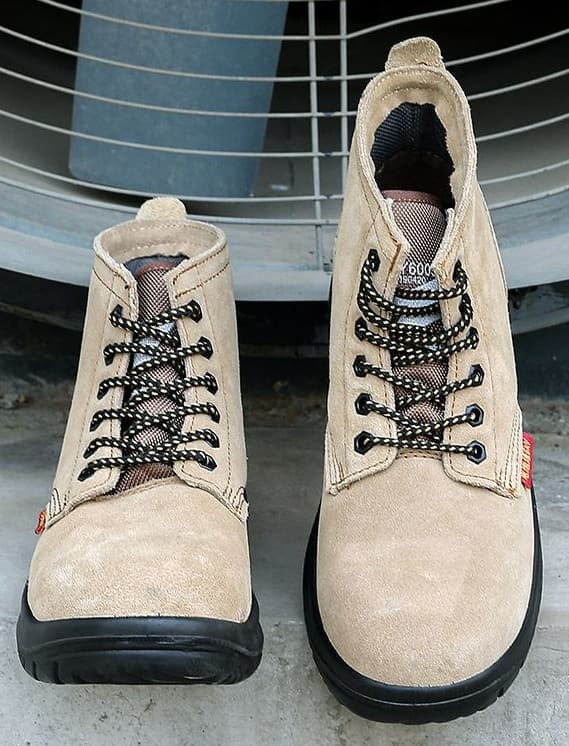Selecting the right steel-toe boots isn’t just about compliance—it’s about pairing workplace hazards with the right protective features. Whether you’re navigating construction sites, manufacturing floors, or utility work, this guide breaks down safety certifications, material trade-offs, and industry-specific needs to help you make informed choices.
Steel-Toe Boot Essentials: Beyond Basic Protection
How Safety Certifications Define Boot Performance
All protective footwear isn’t created equal. Boots meeting ASTM F2413-18 standards undergo rigorous testing for:
- Impact resistance (minimum 75 ft-lbs force protection)
- Compression resistance (withstands ~2,500 lbs of pressure)
- Electrical hazard insulation (blocks circuits up to 600V in dry conditions)
OSHA mandates compliance with these standards under 29 CFR 1910.136, but look for additional markings like EH (electrical hazard-rated) or SD (static-dissipative) if your job involves live wires or flammable materials.
Steel vs. Composite Toes: Pros and Cons for Different Jobs
| Feature | Steel Toe | Composite Toe |
|---|---|---|
| Weight | Heavier (~20% more than composite) | Lighter, reduces fatigue |
| Protection | Higher impact resistance | Meets ASTM standards but less crush-proof |
| Conductivity | Conducts electricity (risk for electricians) | Non-metallic, safer near currents |
| Temperature | Conducts cold/heat | Better insulation in extremes |
When to choose steel: Heavy industrial settings (e.g., warehouses with forklift traffic).
When composite shines: Airports (bypasses metal detectors) or electrical work.
Key Features for Specific Industries
Construction Site Requirements: Slip Resistance and Impact Ratings
Construction boots need oil-resistant outsoles (marked OR) and slip-resistant treads (ASTM F2913) to handle wet concrete or greasy surfaces. A 2021 study noted that slip-resistant soles reduced fall injuries by ~30% on high-risk sites.
Added tip: Look for metatarsal guards if you’re handling heavy materials like steel beams—they shield the upper foot from falling objects.
Manufacturing Floor Needs: Puncture Protection and Ergonomics
For assembly lines with sharp debris (e.g., metal shavings), ASTM-rated puncture-resistant midsoles (tested against 270 lbs of force) are critical. Ergonomics matter too:
- Cushioned collars reduce ankle strain during 12-hour shifts.
- Wide toe boxes prevent bunions for workers standing 90% of the day.
Real-World Impact: Case Studies of Injury Prevention
Preventing Crush Injuries in Warehouse Settings
A Midwest logistics company switched to ASTM F2413-18-compliant steel toes after a pallet jack accident crushed an employee’s foot. Post-implementation, zero toe injuries were reported over two years—attributed to the boots’ 75 ft-lb impact rating.
Electrical Hazard Avoidance in Utility Work
Composite toes proved vital for a Texas utility crew repairing downed power lines. Unlike steel, the non-conductive material prevented accidental current transfer, aligning with OSHA 1910.335(a)(1)(i) for live electrical work.
Your Next Step: Partner with a Trusted Manufacturer
Choosing the right boots starts with understanding your risks—but sourcing them shouldn’t be hard. 3515 simplifies the process for distributors and bulk buyers by producing OSHA-compliant footwear tailored to your industry’s demands. From lightweight composites for electricians to heavy-duty steel toes for construction, we ensure every pair meets the standards that keep workers safe.
Ready to equip your team? Contact 3515 today to discuss custom safety solutions.
Products You Might Be Looking For:
View OSHA-compliant steel-toe work boots
Explore heavy-duty safety footwear for industrial use
Browse customizable steel-toe safety shoes
Related Products
- Wholesale Customizable Suede Safety Boots - Puncture-Proof with Velcro Closure
- Puncture-Resistant Velcro Safety Boots for Wholesale & Custom Manufacturing
- Customizable Anti-Smash Safety Boots for Wholesale & Private Label Manufacturing
- Safety Footwear Wholesale Manufacturer for Custom OEM/ODM Production
- Athletic Safety Shoes with Dial Closure & Steel Toe for Wholesale & Custom Manufacturing
Related Articles
- How Safety Work Boots Engineer Protection: Features and Standards for Targeted Hazard Mitigation
- Matching Men’s Work Shoe Safety Technologies to Workplace Hazards
- Steel Toe Work Boots: Balancing Safety and Comfort for Demanding Jobs
- How to Choose Work Boots That Match Your Job Demands and Safety Needs
- How to Choose Work Boot Materials for Maximum Safety and Durability



















